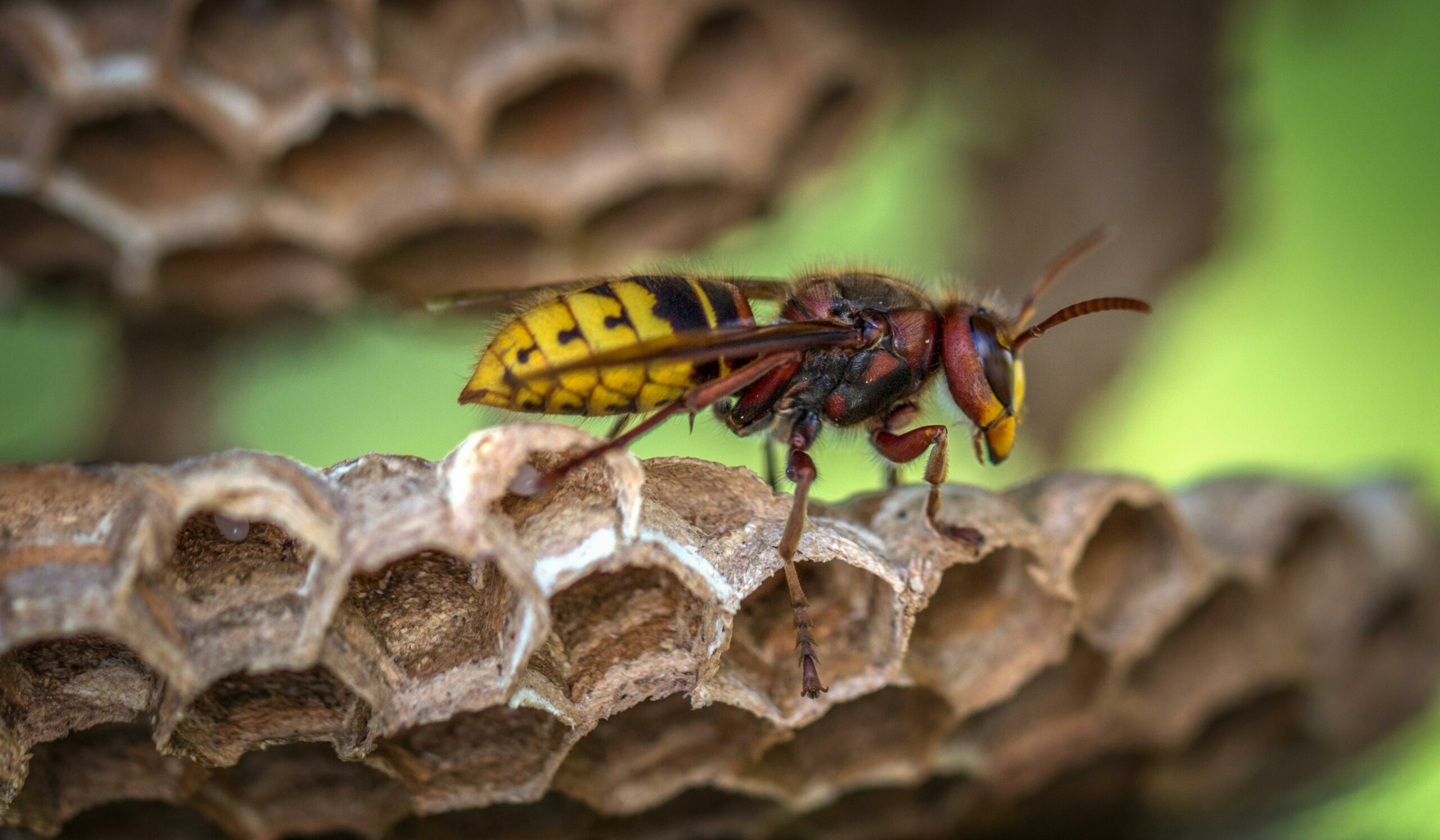Wondering how to avoid Yellow Jackets? Identifying yellow jacket nests is crucial, especially during Fall when these aggressive insects are most active. Increased encounters with yellow jackets can lead to painful stings and potential allergic reactions, making it essential to recognize and address their nests promptly.
Understanding Yellow Jackets and Their Nests
Yellow jackets are a type of wasp known for their aggressive behavior, especially when their nests are disturbed. They live in colonies with a structured social hierarchy, including a queen, workers, and drones. The lifecycle of yellow jackets begins in the spring when the queen starts a new nest. By Fall, the nest has grown significantly, housing thousands of workers. Recognizing yellow jacket nests is vital for safety, as disturbing a nest can provoke a swarm of stinging insects.
Yellow Jacket Nest Characteristics During Fall
During Fall, yellow jacket nests can vary in appearance but typically have a few common characteristics. These nests are made of a papery material created by chewing wood fibers mixed with saliva. Nests can range from the size of a basketball to much larger structures, depending on the colony’s size. Unlike other wasps or hornets, yellow jacket nests are usually enclosed, often hidden from plain sight. They can be located in various places, including underground burrows, wall voids, and attics.
Common Locations for Yellow Jacket Nests in Fall
Yellow jackets build their nests in various locations, preferring sheltered and secure areas. Common places include:
- Ground Cavities: Often in old rodent burrows or other natural hollows.
- Wall Voids: Inside walls of homes or buildings, which provide warmth and protection.
- Eaves and Attics: High and secluded areas where they are less likely to be disturbed.
These locations are preferred during Fall as they offer protection from the cooling temperatures and predators.
Signs of a Yellow Jacket Nest Near Your Home
Recognizing the signs of a yellow jacket nest can help you avoid accidental encounters. Common indicators include:
- Increased Activity: A noticeable increase in yellow jacket activity around your home, particularly near entry points or outdoor areas.
- Visible Nests: Spotting the papery nests in wall voids, eaves, or ground cavities.
- Aggressive Behavior: Yellow jackets become more aggressive as you approach their nesting area.
Disturbing a yellow jacket nest can be dangerous, leading to multiple stings and potential allergic reactions.
Dealing with Yellow Jacket Nests
Here are some tips for dealing with yellow jacket nests:
- Do Not Disturb: Avoid disturbing the nest, as yellow jackets can become extremely aggressive.
- Identify Entry Points: Observe from a safe distance to identify where the yellow jackets are entering and exiting.
- Call a Professional: For safe and effective removal, contact a professional pest control service.
Pest Control Consultants (PCC) offers expert yellow jacket nest removal services in Clinton, IA, La Valle, WI, Springfield, IL, Sycamore, IL, Barrington, IL, Delavan, WI, and the surrounding areas. Our local expertise ensures that nests are dealt with safely and efficiently.
Conclusion
In summary, recognizing yellow jacket nests and understanding their behavior is crucial for safety, especially during the Fall. Prompt and proper action can prevent painful stings and potential allergic reactions. For expert advice and professional pest control services, contact Pest Control Consultants (PCC) today.
Protect your home and family from yellow jackets by taking action now!
